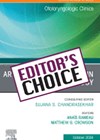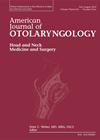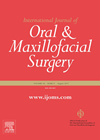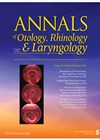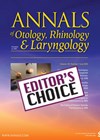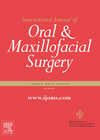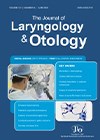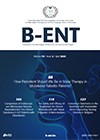
Journal Reviews
AI in ENT practice
Artificial intelligence (AI) technologies are becoming increasingly prevalent in our lives and there has been both enthusiasm and caution for using AI in healthcare. A recent article in the Journal of the American Medical Association reported on a trial examining...
Outcomes of office-based biopsies for laryngopharyngeal carcinoma – faster diagnoses and equivalent oncological outcomes as compared to biopsies under general anaesthesia
Patients in the UK with head and neck cancers are the most likely to face long waits to treatment in comparison to other cancer sites, with only just over half commencing treatment within 62 days of being referred on a...
Maxillomandibular advancement and airway morphology
This is a cadaveric study comparing alterations in airway volume. Seven advancements of the maxillomandibular complex were undertaken, each with a 2 mm incremental advancement being scanned with a total of eight scans per cadaver. They showed that comparisons between...
COVID-19 and oral cancer
This is a Canadian retrospective paper covering the period of March 2018 to March 2022. It identified 190 patients; 91 pre-pandemic and 99 from the pandemic. From this, they found there was no increase in patient delay, professional delay or...
Tonsillectomies are a pain in the neck!
You thought tonsilitis was bad? Having your tonsils removed, now that’s a hard pill to swallow. Very well, you’ll no longer have to fear the CENTOR, but how do we make recovery as pain-free as possible? Pantabtim and colleagues set...
Poking the bear: learning to drain quinsy on a mannequin head
Simulation in medicine has gained significant traction in both undergraduate and postgraduate training over the last couple of decades or so – the benefits to all involved are clear. The airline industry models for human factors and crew resource management...
Volume changes in hemiglossectomy reconstruction
This paper analyses the volume changes in 10 patients, five of whom had hemiglossectomy reconstruction with a radial forearm free flap, whilst the other five patients had reconstruction with an anterolateral thigh flap. Both groups underwent postoperative radiotherapy. The volume...
Biopsy sites with a diagnosis of pemphigusand mucous membrane pemphigoid
This is a systemic review and met-analysis to critically evaluate optimal biopsy site for patients presenting with pemphigus or mucous membrane pemphigoid. Historically, diagnosis is made if H&E staining direct immunofluorescence and serological testing of auto-antibodies. Direct immunofluorescence has been...
A safe management pathway for low-risk head and neck cancer suspected referrals
Head and neck cancer is the eighth most common malignancy and numbers are increasing. This has led to increasing number of suspected cancer referrals which, with imposition of the 28-day Faster Diagnosis Standard implemented in 2020, has further burdened the...
Adenoid cystic carcinoma – insights from a national database
Adenoid cystic carcinoma (AdCC) is a rare cancer of the salivary glands that accounts for approximately 1% of all head and neck malignancies. Hallmarks of this cancer type include a predilection for perineural infiltration, a prolonged clinical course with late...
Pharyngoplasty for palatal snoring
This prospective Belgian study looked at the benefits of barbed reposition pharyngoplasty in the management of patients with isolated unilevel palatal snoring. This technique involves using a barbed suture and repositioning the palatopharyngeal muscle in a more lateral and anterior...
Postoperative ultrasound surveillance in patients undergoing hemithyroidectomy
Hemithyroidectomy, as opposed to total thyroidectomy with radioiodine remnant ablation, is now increasingly undertaken for low-risk, differentiated thyroid cancer. If on histology, this proves ‘high risk’, completion thyroidectomy is done fairly soon. In this retrospective study, a total of 105...

